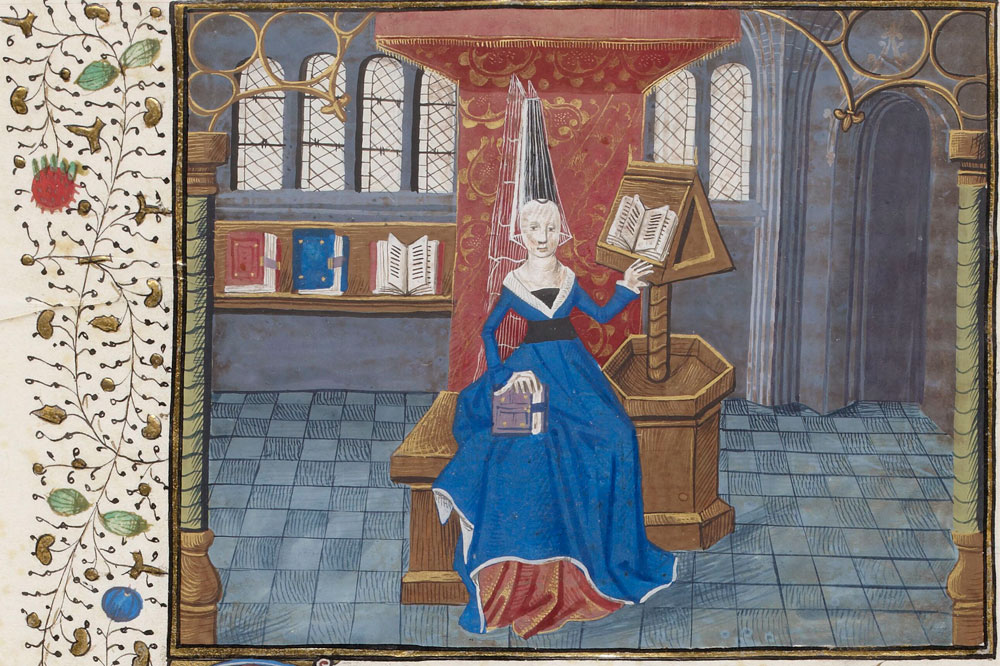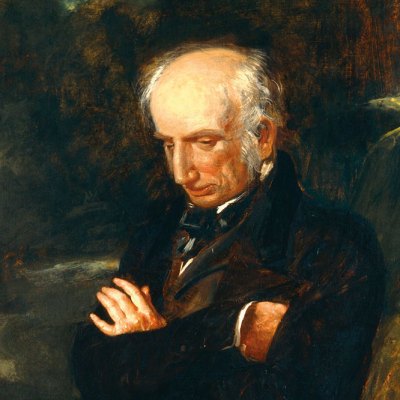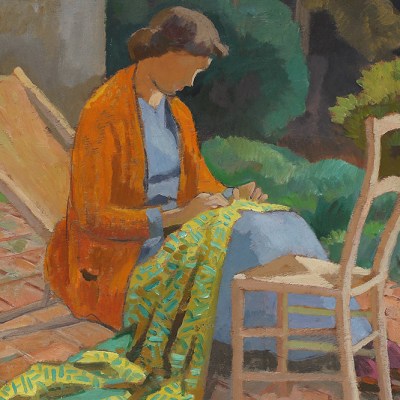
 ‘Four things to see’ is sponsored by Bloomberg Connects, the free arts and culture app. Bloomberg Connects lets you access museums, galleries and cultural spaces around the world on demand. Download the app here to access digital guides and explore a variety of content.
‘Four things to see’ is sponsored by Bloomberg Connects, the free arts and culture app. Bloomberg Connects lets you access museums, galleries and cultural spaces around the world on demand. Download the app here to access digital guides and explore a variety of content.
Each week we bring you four of the most interesting objects from the world’s museums, galleries and art institutions, hand-picked to mark significant moments in the calendar.
Poetry has long served as inspiration for artists. The cross-pollination of the two art forms is evident in several collaborations – the one between the poet Frank O’Hara and the painter Larry Rivers, say, or the vibrant, abstract interpretations of Emily Dickinson’s poetry by contemporary artists including Judy Chicago and Annie Leibovitz.
Many women poets have themselves been visual artists, blurring the lines between the two creative practices. Anne Sexton, for instance, not only wrote poetry but also explored photography to deepen her introspective journeys. A trailblazer in confessional poetry, Sexton delved into the recesses of the human psyche, exploring themes of mental illness, death and womanhood with a raw intensity that redefined American poetry. Today we mark 50 years since Sexton’s death by exploring four works that celebrate or depict women poets.
Portrait of Christine de Pizan in The Book of the City of Ladies (15th century), Bibliothèque nationale de France

Christine de Pizan Presents her Book to Isabeau of Bavaria (c. 1410–14), Master of the Book of the City of the Ladies
Château de Vincennes, Paris
Christine de Pizan (1364–c. 1430), a pioneering French poet and early feminist, holds a special connection to the Château de Vincennes. As a court writer for King Charles VI and other French nobles, her literary works, including The Book of the City of Ladies, challenged societal norms and advocated for women’s intellectual and moral autonomy. One of Europe’s first professional female writers, she also penned a flattering chronicle of the life of Charles V, on whose orders the Château was constructed. Today, in part through guided tours, the Château immerses visitors in the history and culture of the medieval court in which de Pizan played such a groundbreaking role. Find out more about the Château on the Bloomberg Connects app by clicking here on your mobile device, or by scanning the QR code at the bottom of this page.
Portrait of Akiko Yosano (n.d.), unknown photographer. National Diet Library, Tokyo

Portrait of Akiko Yosano (n.d.), unknown photographer
National Diet Library, Tokyo
In this striking portrait, the poet Akiko Yosano gazes directly at the viewer with a steady, determined look, one eyebrow raised as if in quiet defiance. Yosano gained fame with her 1901 collection Midaregami (Tangled Hair), which challenged traditional views of femininity. Her bold poetic voice, especially in her unconventional love poems and contributions to the women’s literary magazine Seitō, helped reshape modern Japanese literature and society. Click here to find out more.
Gabriela Mistral (1983), Roser Bru. Hammer Museum, Los Angeles
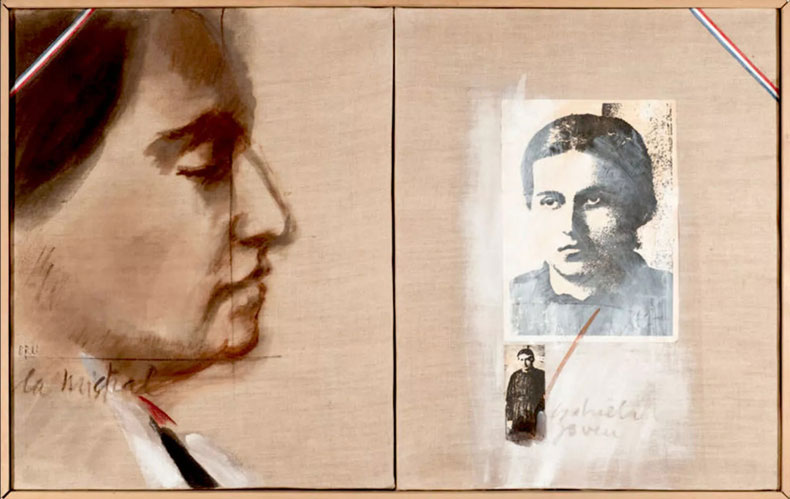
Gabriela Mistral (1983), Roser Bru
Hammer Museum, Los Angeles
In Roser Bru’s tribute to Gabriela Mistral, the Chilean poet appears in multiple forms – paint, print and photocopy – and at different ages, emphasising Mistral’s enduring cultural significance. Mistral was the first Latin American woman to win the Nobel Prize for Literature. Her life had parallels with Bru’s: both experienced life in exile (Mistral moved from Chile to France in 1926, and later lived in cities around the world; Bru moved from France to Chile in 1939) and shared a commitment to social issues and themes of identity, resilience and the advancement of women in the 20th century. Click here to find out more.
Elizabeth Barrett Browning (1858), Elliott & Fry, after Macaire. National Portrait Gallery, London. © National Portrait Gallery, London
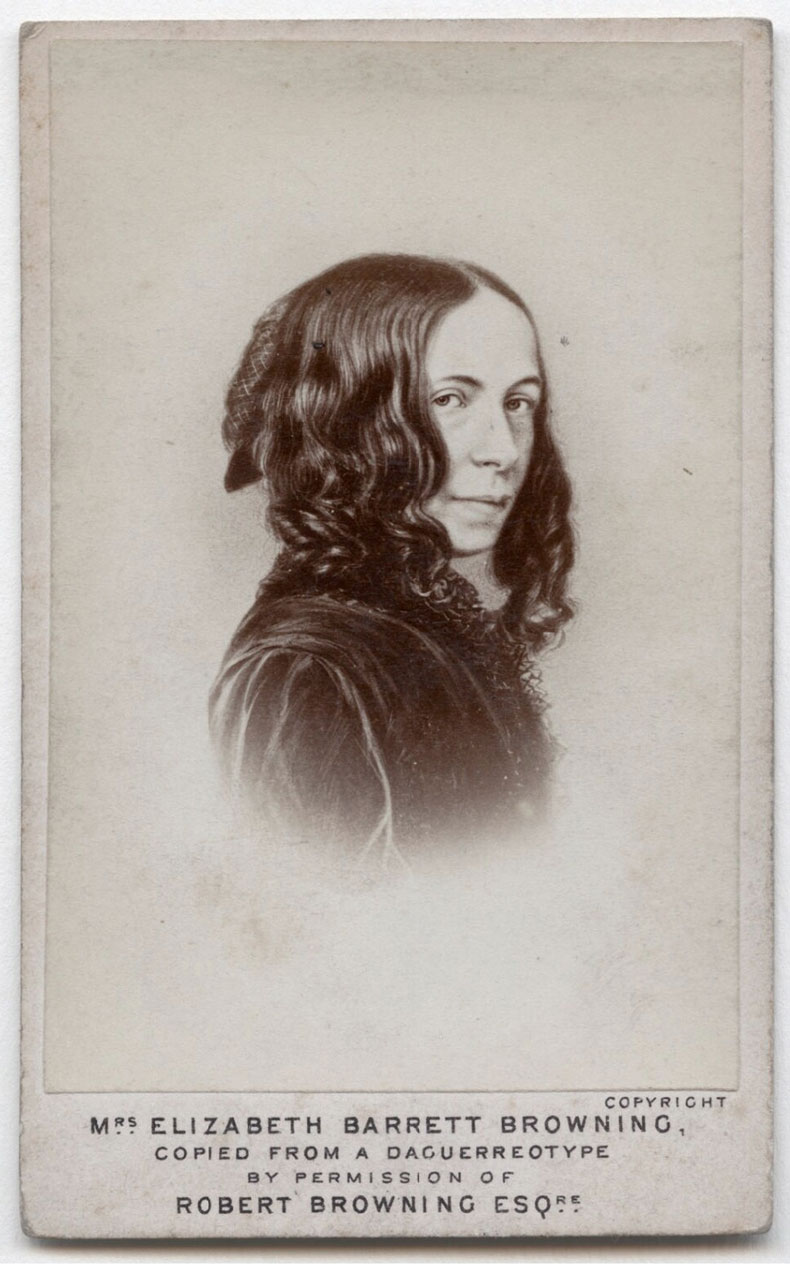
Elizabeth Barrett Browning (1858), Elliott & Fry, after Macaire
National Portrait Gallery, London
This portrait of Elizabeth Barrett Browning on a carte de visite shows the poet with her signature dark ringlets, taking a confident and knowing sideways look at the viewer. Despite becoming ill at 15 and struggling with pain her whole life, in this portrait her strength and intelligence shine through. While her role as a writer is not apparent in this image, the original version also featured her writing desk. Barrett Browning’s work addressed issues including female ambition, slavery and social reform, leaving an enduring legacy in both literature and activism. Click here to find out more.
![]() ‘Four things to see’ is sponsored by Bloomberg Connects, the free arts and culture app. Bloomberg Connects lets you access museums, galleries and cultural spaces around the world on demand. Download the app here to access digital guides and explore a variety of content or scan the QR code.
‘Four things to see’ is sponsored by Bloomberg Connects, the free arts and culture app. Bloomberg Connects lets you access museums, galleries and cultural spaces around the world on demand. Download the app here to access digital guides and explore a variety of content or scan the QR code.
